I was amazed last week when my nephew announced he was sorry for people who had to play Rocket League at 60 frames per second. He’s discovered the joys of next-gen Xbox and a 144hz monitor, allowing him to play at 120fps. He told me that some games are great at 60fps, but Rocket League at 60fps is awful when you’ve played it at 120fps.
This troubles me.
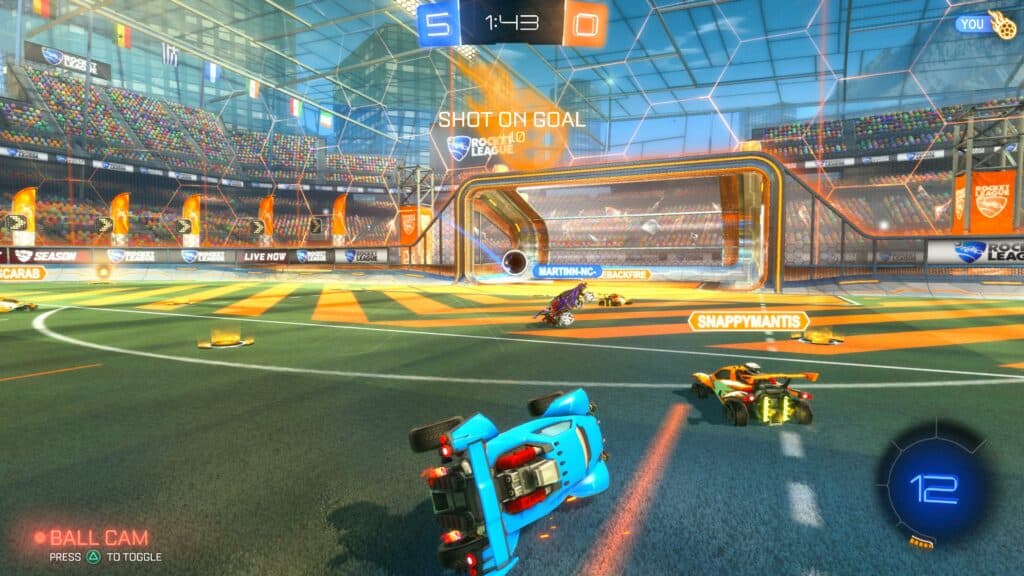
I say this because 60 frames per second has been the holy grail of console gaming frame rates since forever. It’s that sweet moment when every single half refresh of an NTSC TV screen is being populated with a new image from your video game of choice, making the game run like melted butter.
PC gamers have enjoyed higher frame rates for decades, but console gaming and consumer TVs have been inextricably linked, giving every game two clear benchmarks to aim for: 30fps and 60fps (or 25fps and 50fps on PAL TVs, though they’re not so common now). A full frame every full refresh, or two half-frames every refresh. And I say ‘aim’ because the processor can’t always keep up with these intervals.
Frame rates definitely need to stay high – especially in racing games – because the alternative sees the illusion of motion destroyed. Remember, every time you race through Eau Rouge in F1, you’re actually seeing some 200 still images, each one depicting the view a few more feet down the road.
You don’t need to do this 60 times every second to make the illusion work; cinema has captured imaginations for a century at a mere 24 frames per second, and would still show you moving through Eau Rouge at 190mph. But 24fps definitely isn’t smooth enough to effectively control a modern racing sim. You need more visual data. But how much exactly?
The number of frames actually needed to make a game playable is debatable. You could play a round of Texas Hold ‘Em at 1fps, no problem. 10fps is more than the frame rate of Road Rash on Mega Drive, which is clearly jerky, but still gives an impression of motion and speed and is still – crucially – fun to control. Then 15fps was enough for Virtua Racing on the Mega Drive/Genesis to still have an RRP of £70 and garner rave reviews.
But line that version up side by side with the 30fps arcade game or the 60fps Switch conversion and you’d see the advantage of fluidity immediately. The Switch version looks hyper-solid, the arcade game looks choppy, while the Mega Drive version looks barely playable.
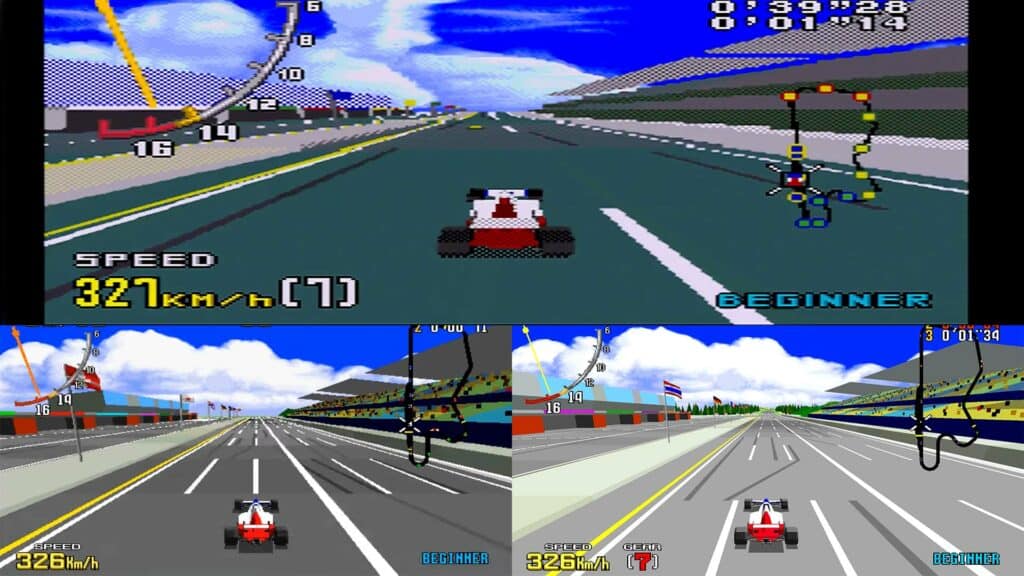
But it was playable in 1994. Why is that? Well, firstly our brains are phenomenal when it comes to adapting to the stimulus they’re given. Too little light and your rods and cones adapt to let you see more in the dark. Carry a heavy object on one side of your body and you’ll automatically create a counterbalance with your own mass. And play a game at a low frame rate for long enough and you will learn to see the game through it, though anything even 10fps smoother will look like quicksilver afterwards.
Sometimes your eyes don’t have to imagine the missing frames – modern TVs can do it for you, cleverly adding extra frames in to make 30fps games appear to run at 60fps. While the effect isn’t always convincing, especially near the edges of the screen where the action moves too fast to be interpolated realistically, these effects also take time to compute, which can make input lag go up. If your TV is drawing extra frames (tongue poking out, presumably) then proudly showing you what you did half a second ago, it’s pointless. You’re already off the road.
Keep in mind also that FPS does not always relate to responsiveness. Physics engines mostly run faster than the visuals anyway. For example, iRacing reportedly samples its tyre modelling more than 300 times a second. It varies from game to game, but it’s rare these days for a racing sim to run at 60fps and at 60hz physics too.
It wouldn’t behave realistically on a bumpy track – the reference points can’t take tiny undulations into account because it can’t even see them. But I would argue that 60fps for the visuals is plenty fast enough, especially if you play through a monitor with low latency instead of an LCD TV which is going to have some degree of input lag.
For me, 60fps is the ideal frame rate. It’s smooth enough that you can’t see the flicker, responsive enough that you can react to stimuli in an instant and was always the traditional speed of arcade gaming, which brings home that extra sheen of quality you could only find in arcades. I still love that.
For example, Ridge Racer and Daytona USA ran at 60fps in arcades and only 30fps and 20fps respectively when they first hit consoles in 1994. The PlayStation’s version of Ridge Racer was seen as a triumph at 30fps; the Saturn’s Daytona was a failure at 20fps. It does make a difference.
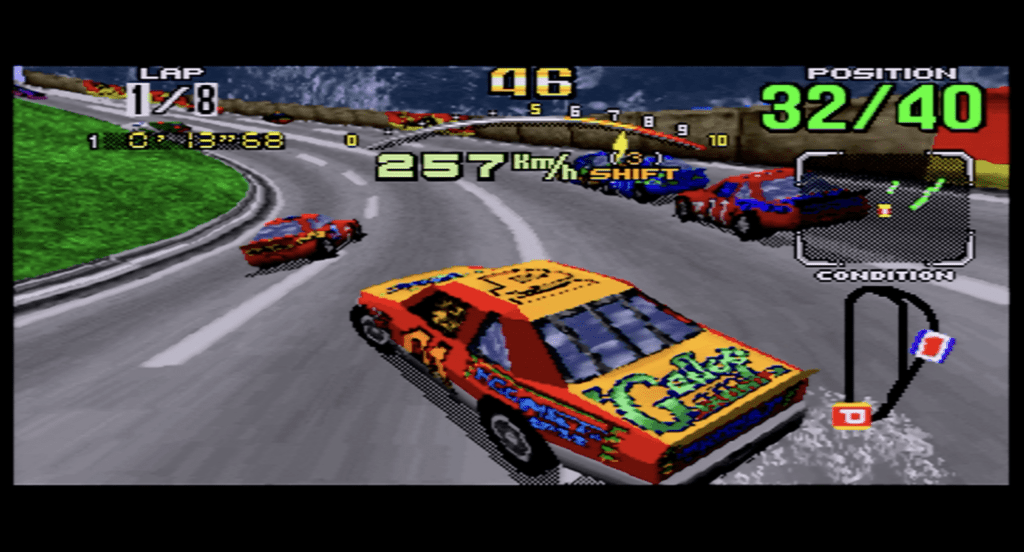
But this is where things get interesting (in a sort of Homer-Simpson-shouting-NEEEERRRRD kind of way). Missing either of the two main target frame rates (30 and 60) looks plain bad, to the point where a game running between 60fps and 30fps can actually look worse than one running at a rock-solid 30.
There are all kinds of things to consider here, such as frame pacing that means you get the same number of frames but not at even intervals making it look choppy, or V-sync which means frames are only sent to the display when they are completely drawn, eliminating an awful effect known as ‘screen tearing’. Also, games can either slow down – still displaying all the frames but apparently in slow motion due to the complexity of the images being drawn – or they can drop frames, whereby the action keeps moving at a normal pace, but you don’t get as many frames actually shown of it.
So eliminating these issues and delivering a solid frame rate that matches the TV’s output is more favourable than aiming higher and not quite hitting the mark. The PAL version of Sega Rally 2, for example, runs at 50fps (with stuttering) due to the conversion from 60hz programming, then shifts to 25fps for roughly 70 per cent of the time. Re-pacing the game and capping it at 30fps would arguably have been preferable. As it is, the mish-mash was hardly a great way to show off new hardware.
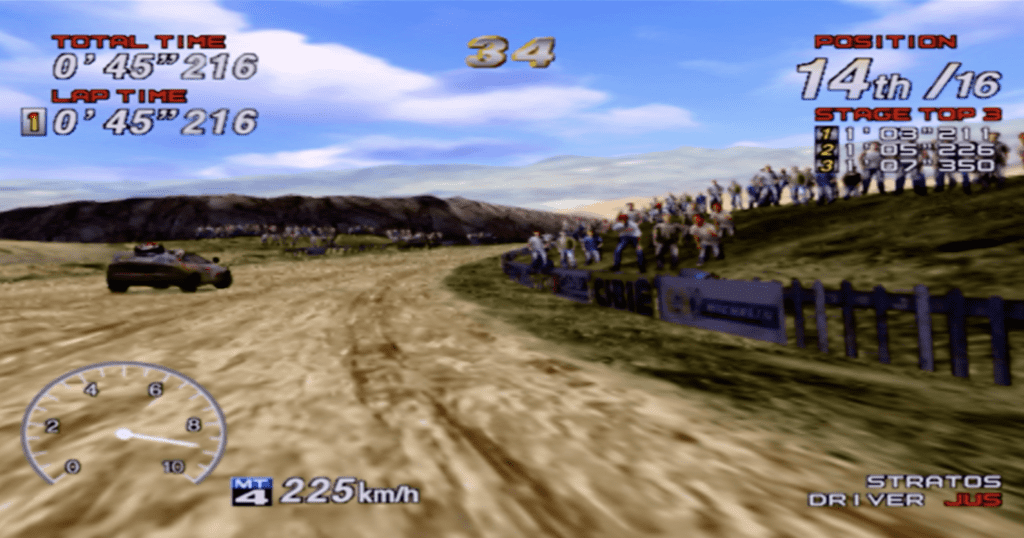
There is also the controversial issue of motion blur. Going back to cinema as a comparison point, film captures one 24th of a second in one frame, in which fast-moving parts of the image like a waving hand or kicked football will become a blur, just like in real life. Yes, you may wave your hand in front of your face now, I’ll wait.
Your brain will more happily piece together the 24 pieces of information concluding it’s seen one second of actual motion. This can be applied to racing games too, and it works. Crash Team Racing Nitro-Fueled is the smoothest 30fps game I’ve ever seen because its blur is so good. Which is a weird thing to say when it’s still good old 30fps, but it demonstrably looks smoother than actual old 30fps games.
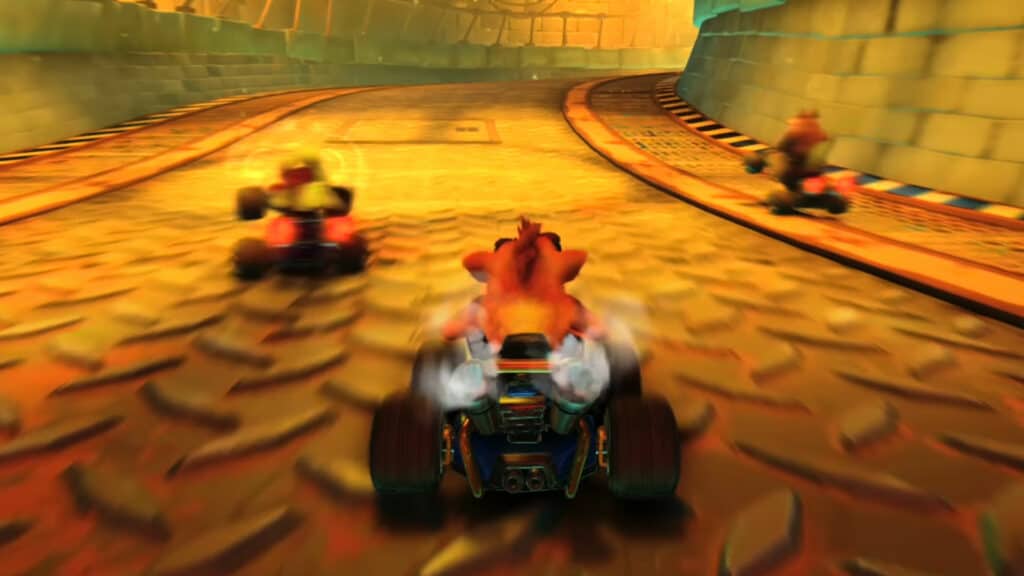
But even blurred 30fps isn’t acceptable for a racing sim in 2021, at least not during gameplay. We’re onto 4K resolution at 60fps as the benchmark (which I absolutely love – long live PS5 and Xbox Series X) and optional 120fps modes in some games like DIRT 5.
Obviously, 120fps is pointless if you’re still rocking a 60hz screen. It can’t display any more fluidity, so there’s no point having it – in fact, many games don’t even show the option if your TV isn’t capable of displaying it.
And if you have a next-gen console and a TV that supports Freesync, then it doesn’t matter if your game isn’t quite hitting 60fps, because (brilliantly) the monitor will only display the frames it receives. Nvidia does this too with G-sync, which uses the same principle. So as long as the frame drop is only minor, you’ll probably never even notice it happened because you’re not getting doubled-up frames that make it appear choppy. This I applaud.
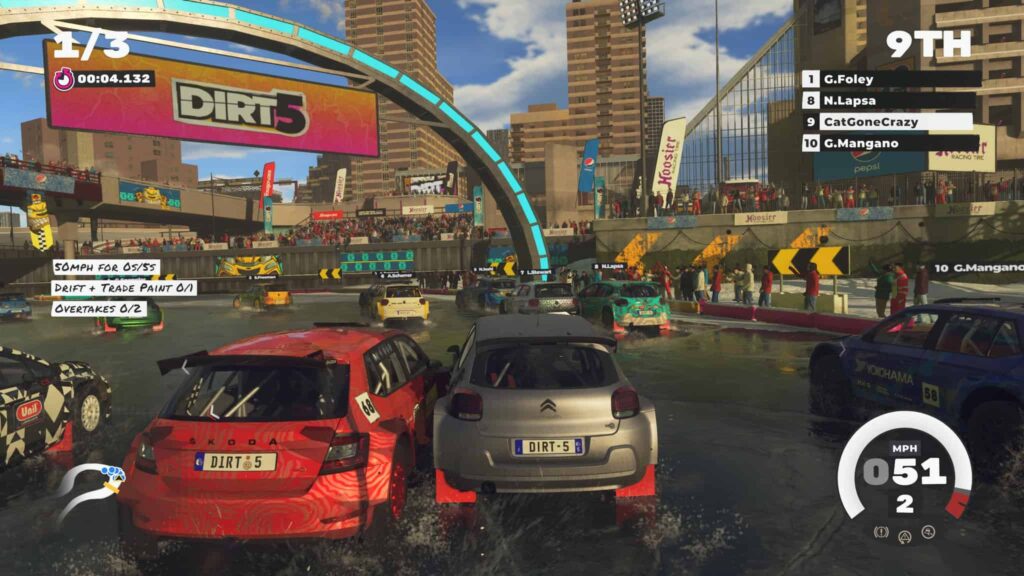
120fps, however, is a luxury. But I’d argue not one worth chasing at the expense of a drop in other graphical fidelity. If you have a state of the art gaming PC, sure you can have your 120fps cake and eat it, but on console and most PC setups, it’s still a trade-off: fluidity vs detail. Until we can have both I’m just not fussed, which is saying something considering how much I care about this stuff.
As for my nephew? He would have been perfectly happy with 60fps if he hadn’t ventured down the rabbit hole, I’m certain. But… well. There’s no saving him now.
















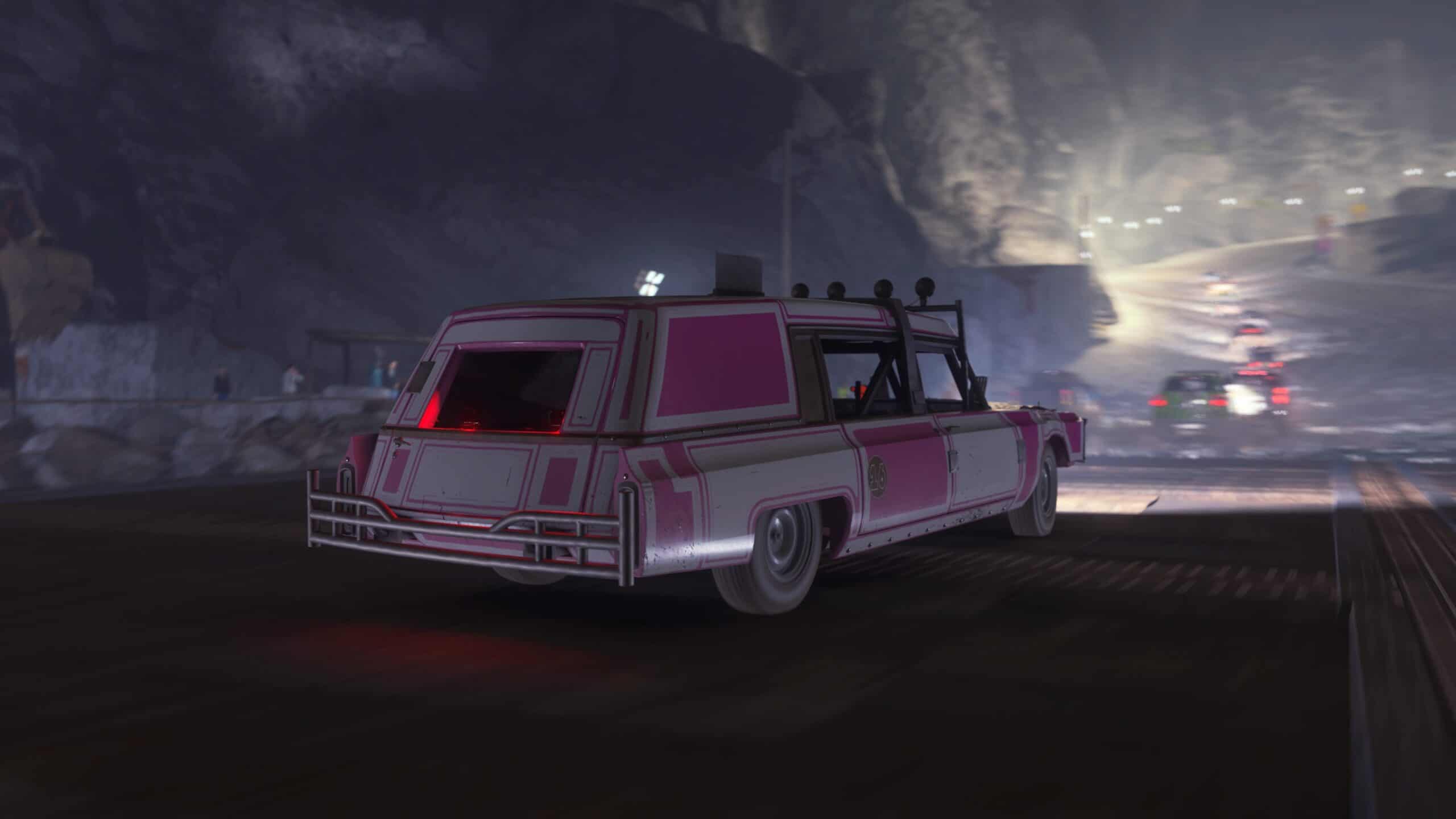
![Project Cars 3 is OVER | Traxion.GG News [07/05/21] | 4K](https://traxion.gg/wp-content/uploads/2021/05/TX-NEWS-8-THUMB.png)



